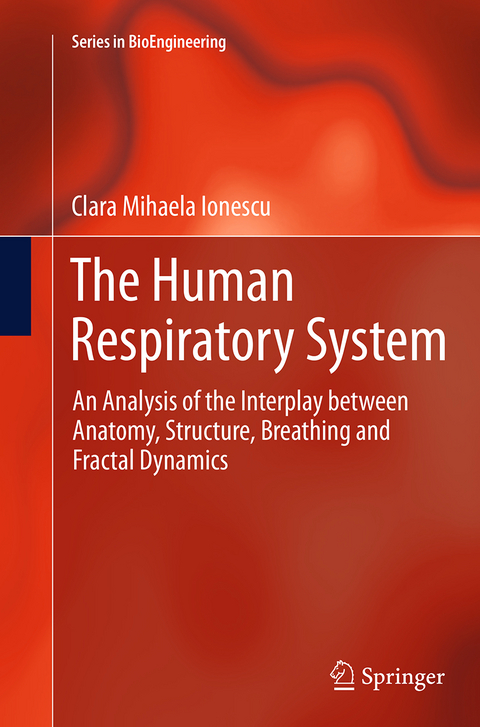
The Human Respiratory System
Springer London Ltd (Verlag)
978-1-4471-7183-6 (ISBN)
The text reveals the latest trends in modelling and identification of human respiratory parameters with a view to developing diagnosis and monitoring technologies. Of special interest is the notion of fractal structure which is indicative of the large-scale biological efficiency of the pulmonary system. The related idea of fractal dimension represents the adaptations in fractal structure caused by environmental factors, notably including disease. These basics are linked to model the dynamical patterns of breathing as a whole.
The ideas presented in the book are validated using real data generated from healthy subjects and respiratory patients and rest on non-invasive measurement methods.
The Human Respiratory System will be of interest to applied mathematicians studying the modelling of biological systems, to clinicians with interests outside the traditional borders of medicine, and to engineers working with technologies of either direct medical significance or for mitigating changes in the respiratory system caused by, for example, high-altitude or deep-sea environments.
Clara Ionescu received her MSc in industrial informatics and automation for “Dunarea de Jos” University in Galati, Romania in 2003. The subject of her study being modelling of the respiratory system by means of forced oscillations. She obtained her PhD from Ghent University in 2009 studying the identification of the human respiratory system using fractional-order models. Currently she is a post-doctoral fellow of the Flanders Scientific Research Centre. She has eight years’ expertise in modelling and control of biomedical systems (respiratory control, control of artificial muscles, glucose-level regulation for Type I diabetes, automated control of anaesthesia). She has around 150 peer-reviewed publications in journals, conferences and book chapters and is actively involved in the promotion of the concept of fractality in biological systems and its application in medicine.
Introduction.- The Human Respiratory System.- Respiratory Impedance.- Modelling the Respiratory Tract by Means of Electrical Analogy.- Mathematical Basis for Modelling.- Modelling the Respiratory Tract by Means of Mechanical Analogy.- Frequency Domain: Parametric Model Selection.- Time Domain: Fractal Dimension.- Nonlinear Effects in Measurement of Respiratory Impedance.- Conclusion.- Appendices: Mathematical Basis of Fractional Calculus; Overview of Forced Oscillation Technique Devices.
| Erscheinungsdatum | 02.09.2016 |
|---|---|
| Reihe/Serie | Series in BioEngineering |
| Zusatzinfo | 129 Illustrations, color; 19 Illustrations, black and white; XXV, 217 p. 148 illus., 129 illus. in color. |
| Verlagsort | England |
| Sprache | englisch |
| Maße | 155 x 235 mm |
| Themenwelt | Mathematik / Informatik ► Mathematik ► Angewandte Mathematik |
| Medizinische Fachgebiete ► Innere Medizin ► Pneumologie | |
| Medizin / Pharmazie ► Physiotherapie / Ergotherapie ► Orthopädie | |
| Studium ► 1. Studienabschnitt (Vorklinik) ► Physiologie | |
| Naturwissenschaften ► Biologie | |
| Technik ► Medizintechnik | |
| ISBN-10 | 1-4471-7183-7 / 1447171837 |
| ISBN-13 | 978-1-4471-7183-6 / 9781447171836 |
| Zustand | Neuware |
| Haben Sie eine Frage zum Produkt? |
aus dem Bereich


